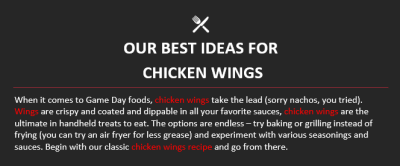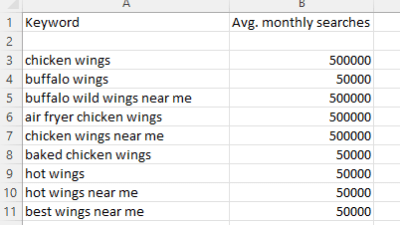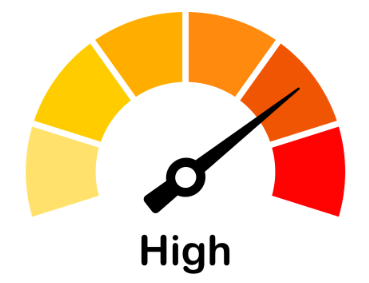What Does It Takes to SEO A Landing Page
&
How to Find Good Help
So, let’s talk about your landing page. If this is not right, you might as well not spend any money on SEO because your prospective customers on the internet have become spoiled brats – they have high expectations of websites and won’t stay on a sub-standard website long enough to buy a product or book an appointment. They have become sophisticated shoppers.
First of all, you want to ensure someone that clicks onto the landing page will understand it and wants to read it. This is called “customer experience” and we digital workers use the term “UX” to talk about “customer experience.” You may think we are silly, but the good webpage designers really focus on this overall response to a landing page.
- Is the main color of the website appealing? While bright neon green might be your favorite color, it may not be appropriate for the website.
- Is the page organized logically? Does it “flow” easily? Will someone new to the website be able to follow the flow?
- Are the visuals (pictures, videos, and icons) placed strategically? Or are they just thrown onto the page willy-nilly, with no seeming relevance to the copy around them? Are they stock pictures that someone pulled for you that you have seen on five of your competitor’s websites?
- Is the INTENT of your website clearly stated on your landing page? In other words, if you are selling chicken wings, are the words “chicken wings” prominently displayed? You can certainly talk about raising the chickens, you can talk about processing in your chicken plant, but if you are a specialty sales organization that only sells the wings, be clear and upfront about “chicken wings” so Google AND your prospective clients will understand clearly that “chicken wings” are the focus of your marketing.

- Is the copy written well?
- Does the copy have any real relevance to you specifically, as the business owner, or was it copied from some other website?
- Is it cold and technical, or does it really lack importance or relevancy to the topic?
- Is your business model reflected on this page? Do you really give meat-and-potatoes information to a prospective client or is the copy just fluff and air. Do your values show up on the page? (If your answer is “no,” work with a copywriter to redo the page.)
- Are your “keywords” in your copy (see above).
- Do you have duplicated copy, where you said the same thing twice (this should be eliminated)? Is the font size big enough to be read easily?
- Do you have an intrusive pop-up or ad that every single looker must get around before they can see your core message?
Note: There is a place called Fiverr.com where you can shop for things digital. Be sure to choose someone who has English as their first language. Ask for references before you buy services.

So, I Have My Landing Page, Now What?
Working with clients to transition their websites to make them more SEO compatible, I get a lot of questions. The number one question I get is: I paid to have this website, why do I have to pay AGAIN to do more programming on the website?
THAT, my friends, is a valid question. And there is a simple answer.
SEO is extremely complicated. It takes a set of very specialized skills to get a website optimized (this means adjusted or re-programmed) to be SEO responsive. The normal, everyday website developer does not have these skills.
Clients every day attempt to pay less for their websites. I get it. The problem with this type of negotiation is – website development is labor-intensive. Website developers have to eat, too, and they have kids going to college just like everyone else. If you push their pricing too far down, you get fewer hours into your project, and you might never know you were short-cut. A lot of what developers do is invisible to the non-technical person. It may be much later before you figure out what was skipped.
And a website all by itself out on the internet doesn’t necessarily get you traffic. The owner of the website has to go out into the web world and give shout-outs: “HEY, I’M OVER HERE. COME SEE ME.” That’s called SEO (Search Engine Optimization).
SEO is expensive, and the time commitment is between six months and one year before a business owner will see a change in their website traffic. It takes a lot of patience – AND money. And there is no guarantee it will meet your expectations. There are just too many moving parts, not the least of which is the general public itself with their search patterns.
The reason it’s expensive is, again, because it’s very labor-intensive. It’s not a process a technician does once and done. The program is monitored each month to ensure the results are coming through – slowly, for sure, but coming through. SEO builds and builds, taking on steam as it goes. The speed depends on your industry, on how competitive your business is in your location, and several other items.
And, to boot, there are jillions of companies out there spamming your email saying, “Hire me, hire me, I’ll do SEO for you.” It reminds me of that old joke. What do you call the guy who graduated last in his medical school class? You call him “Doctor.” Same way with digital marketers. How can you tell the difference between the good guys and the scammers? Especially since they are more often than not from other countries – you never meet them face-to-face; zoom is the best you can do.
First, as a digitally uneducated owner of a website, you need to know just a few fun facts:
- Your SEO consultant must be uber-organized. This means they must have an extensive on-boarding system. While you are shopping around for an SEO consultant, ask them to show you their on-boarding document. If it’s less than two pages long, they are planning on doing only half the work needed for SEO.
- SEO takes about 150 to 200 steps to implement, and all of these have many technical requirements. And since the internet is constantly changing, that means us digital marketing people are ALWAYS in school. One person cannot keep up with all the changes for all the technical steps. Find an SEO company with enough staff to have specialists in each of the SEO programs. Ask the question: How many people are on your staff? How many steps on this on-boarding sheet do you personally handle? Will I have a dedicated customer service representative?

- If your SEO company is in India (which is perfectly fine, on the face of it), you may be getting up at 5:00 in the morning to book a customer service call with them. Are you prepared to do that? Be sure to ask, “What are your customer service hours translated to MY TIME ZONE?”
- Be prepared to dedicate several hours of your time to the start-up of SEO. The technicians need a LOT of information and a LOT of decisions from the business owner at the start. Be absolutely sure about your answers, because the information you provide will be replicated on the internet many times in the near future. That’s part of SEO, and the information must be the same each time it is presented to the net.
- Your landing page is the most critical page of the website. Google (the largest search engine in the world) crawls (scans) a website looking for certain programming. If you get your landing page right, you are on the way to conquering SEO.
Once you get your landing page up to standards, THEN you can start working on SEO.
What Exactly Do I Need from My SEO Company?
These are some of the re-programming topics you will want to have done. This blog post is not nearly long enough to cover every step of SEO installation, but these will open the conversation with a technician.
- Ask your technician to help you make a list of “keywords.” The programmer has tools to use that will help them come up with a minimum of 30 keywords that need to be added to your landing page content. They will explain this more in depth. For the “chicken wings” example above, the main keywords might be:

You get the idea.
Once you decide on your main keyword, this keyword should appear right at the beginning of your website, and it should be tagged by the programmer. This tells Google, “Hey, THIS is what I’m all about.”
- Your programmer should arrange the copy so you can tag what’s called a “header.” You can have several headers (H1, H2, H3, etc.) but only ONE H1. That also should be your main keyword. Make sure your programmer is adding headers to each core page of your website.
- You need to have “internal links” and “external links” on your landing page.
- An “internal link” is a hyperlink that references (goes to) another page on your website.
- An “external link” is a hyperlink that connects to some other website specifically in the same industry as your own website. For instance, in the “chicken wing” example, a link to a delivery company/service would be good, or a link to a fryer manufacturer, or even to Tyson Foods who might provide you with chickens. Of course, if Tyson is a competitor, you probably don’t want to use them as an external link.
Important Note: Links are critical to SEO and link building is tedious and tricky. Whatever you do, be sure that each and every link that is added to your website are “quality” – they have some real connection to your industry. For instance, a “chicken wing” link to a sky diving instructor’s website would not be quality. Google will actually penalize you for these types of links.
When you interview your prospective digital marketing company, ask them specifically how they will determine the links for your website. And listen very carefully to their response.
- Your website will need a Site Map. A sitemap is a list of all the pages on your site, helping you organize content and create intuitive navigation. This will help Google crawl your website. The easier you make it for Google to see and understand, the more your website has a chance of being toward the top of a Google search. In the Site Map, you may want to have “no crawl” pages – telling Google that page does not have relevant information – this would be a Contact Page, or a map page. Again, this makes it easier for Google to rank your website.
- Have the programmer put your web pages through specialized programs to test your website speed. This is especially crucial with the mobile version of your site. Your website has to load up in about 3 seconds. If you don’t load up fast enough, people will just click away from your site. There are ways to get that done, you just have to make sure your programmer understands that’s your goal.

There is more to this thing called SEO, but I am out of time and space.
As a business owner you are responsible for something called Return On Investment. If you don’t make money from your marketing programs, why do them? Your family, your employees, and your banker rely on you to make effective decisions on how you spend your corporate funds.
Come back to my blogs for other good information you as a business owner might need in order to make an informed decision on 1) which digital marketing firm to hire, and 2) what are the key components to your website for SEO to work for you.


Itís difficult to find knowledgeable people about this subject, but you seem like you know what youíre talking about! Thanks
דירות דיסקרטיות בהרצליה
Thank you for your comment.